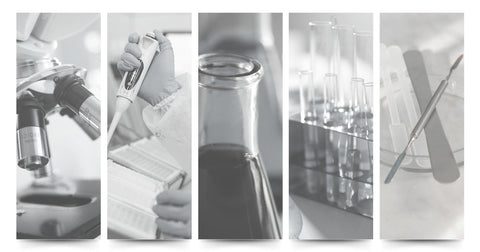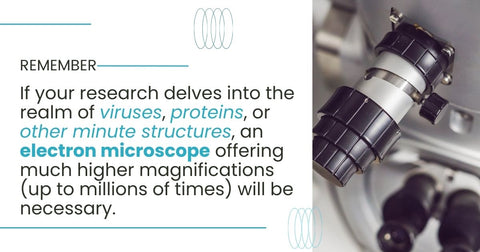Every successful experiment starts with the right laboratory tools and equipment. Whether you're a seasoned researcher or a budding scientist, having the fundamental tools in your lab is crucial for safety, accuracy, and efficient experimentation. Here's a look at 15 essential items that belong in every researcher's arsenal, explained in more detail:
1. Lab Coat
This protective garment, typically made of cotton or a cotton blend, shields your clothes and skin from chemicals, spills, and biohazards. Opt for a lab coat that fits comfortably over your clothes and allows for easy movement during experiments.
2. Goggles
Eye protection is paramount. Choose goggles that fit snugly around your eyes and provide a complete seal. They safeguard your eyes from splashes, fumes, and flying debris commonly encountered when working with chemicals or conducting dissections.
3. Gloves
These provide a barrier against harmful chemicals, biohazardous materials, and allergens. Select gloves made from the appropriate material for the task at hand. Latex gloves are common. But nitrile gloves offer better protection against some chemicals. Remember to change gloves frequently to prevent contamination.
4. Microscopes
Peer into the unseen world with microscopes. These powerful tools magnify tiny specimens, allowing researchers to observe cellular structures, microorganisms, and other minute details invisible to the naked eye. Light microscopes use visible light for magnification. While electron microscopes use beams of electrons to achieve much higher magnifications for studying structures at the atomic level.
5. Test Tubes
These versatile glass tubes, often made of borosilicate glass for heat resistance, hold, mix, and heat small quantities of liquids or solutions during experiments. They come in various sizes and can be “stoppered” to prevent spills or contamination.
6. Beakers
Similar to test tubes, beakers are used for holding, mixing, and heating larger volumes of liquids. Beakers are typically wider than test tubes and are often made of borosilicate glass for durability. They may have pouring spouts for easier transfer of liquids.
7. Pipettes
Pipettes are essential for the precise transfer of small liquid volumes. They come in various types, each designed for specific volumes and applications. Volumetric pipettes deliver a single, precisely measured volume. While graduated pipettes allow for measuring and dispensing variable volumes.
8. Bunsen Burners
Bunsen burners provide a controlled flame for heating chemicals and solutions in the lab. They offer adjustable air intake to regulate the flame temperature, crucial for different experiments. Although hot plates are increasingly replacing Bunsen burners in some labs due to safety concerns, offering a more stable heating surface.
9. Droppers
Droppers offer precise control for transferring small drops of liquids in concentrated solutions. They are commonly made of plastic or glass and consist of a hollow rubber bulb and a tapered tip.

10. Thermometers
Choose the right thermometer based on the temperature range you need to measure and the desired level of accuracy. That’s because they ensure proper conditions for experiments and monitor heating or cooling reactions.
11. Dissecting Tools
Dissecting tools allow researchers to meticulously examine the anatomy of organisms, separating tissues and organs for detailed study. A typical dissecting kit includes scalpels of various sizes, forceps for grasping tissues, tweezers for fine manipulation, and probes for exploring delicate structures.
12. Tongs
Handle hot objects safely with tongs. They prevent burns and contamination when working with heated equipment or samples. Tongs come in various lengths and materials, with heat-resistant metal tongs being a common choice for lab use.
13. Weighing Machine
Ensure accurate measurements with a weighing machine. These instruments are vital for quantifying ingredients, samples, and reaction products. Depending on the required precision, analytical balances offer the highest level of accuracy for minute measurements. On the other hand, electronic balances are suitable for most laboratory weighing tasks.
Important Factors To Consider When Buying Laboratory Tools And Equipment
Equipping your lab requires thoughtful decisions. Here's a breakdown of key factors to consider when purchasing each of the essential tools mentioned previously:
Lab Coat:
- Material: Cotton or cotton blends prioritise breathability and comfort during long lab sessions. If working with open flames or hazardous materials, consider flame-retardant materials like Nomex for an extra layer of protection.
- Size: A proper fit is crucial. You need a lab coat that allows for unrestricted movement while performing experiments. But shouldn't be so loose that it becomes a snag hazard. Opt for adjustable cuffs and waist closures to achieve the perfect balance.
Goggles:
- Fit: Ill-fitting goggles can become uncomfortable and compromise safety. Choose goggles that conform to the shape of your face, creating a snug seal around your eyes. Consider options with adjustable head straps and ventilation ports to prevent fogging during use.
Gloves:
- Material: Not all gloves are created equal. Prioritise selecting gloves based on the chemicals you'll be handling. Latex gloves offer general protection against aqueous solutions and mild chemicals.
Nitrile gloves provide better resistance to a broader range of chemicals, including organic solvents and oils. For handling highly hazardous materials, consult with safety personnel to determine the appropriate glove material with superior chemical impermeability.
- Dexterity: Consider the balance between protection and dexterity required for your tasks. Thicker gloves may offer better protection but can limit tactile sensation, making it difficult to handle delicate equipment or samples.
Microscopes:
- Magnification Power and Resolution: These two factors go hand-in-hand. Magnification power refers to the ability to enlarge an image, while resolution refers to the microscope's ability to distinguish fine details. For most biological research, a light microscope with a magnification range of 40x to 1000x and good resolution is sufficient.
However, if your research delves into the realm of viruses, proteins, or other minute structures, an electron microscope offering much higher magnifications (up to millions of times) will be necessary.

Test Tubes and Beakers:
- Size and Material: Select the size based on the volume of liquids you typically handle. Smaller test tubes are suitable for conducting micro-scale reactions or working with limited sample volumes. Beakers come in a wider range of sizes and may have pouring spouts for easier transfer of liquids. Borosilicate glass is a common choice for both test tubes and beakers due to its heat resistance, durability, and chemical compatibility with most laboratory solutions.
Pipettes:
- Type and Accuracy: There are two main types of pipettes: volumetric pipettes designed to deliver a single, precisely measured volume, and graduated pipettes for measuring and dispensing variable volumes. Opt for the type that best suits your experimental needs.
When it comes to accuracy, consider the level of precision required for your measurements. Higher-precision pipettes, often called micropipettes, are available for critical tasks where minute volumes must be measured accurately.
Bunsen Burners or Hot Plates:
- Safety Features and Heat Control: Bunsen burners require a stable work surface and proper ventilation to function safely. Hot plates offer a safer alternative for some applications, providing a more stable heating surface and eliminating the open flame hazard. Regardless of your choice, ensure the heat source can achieve the desired temperature range for your experiments.
Chemicals:
- Purity and Safety: Opt for laboratory-grade chemicals to ensure consistent results and minimise impurities that can affect experiments. Always prioritise safety! Research the specific hazards associated with each chemical and handle them according to the Safety Data Sheet (SDS), which provides information on proper handling, storage, and disposal procedures.
Distilled Water:
- Quality: Contaminants in water can interfere with experiments. Purchase distilled water from reputable suppliers to ensure its purity and freedom from dissolved minerals and ions.
Droppers, Thermometers, Tongs:
- Material Selection: Droppers are commonly made of plastic or glass, with glass droppers offering greater chemical resistance. Thermometers can be glass or digital. Digital thermometers offer a wider range of features and improved safety. Choose tongs made from heat-resistant materials like stainless steel for handling hot objects.
Weighing Machines:
- Capacity and Accuracy: Select a weighing machine with a capacity that exceeds the weight of your typical samples. For example, if you typically work with samples exceeding 100 grams, a balance with a capacity of 200 grams would be appropriate.
Consider the required level of accuracy for your measurements. Analytical balances offer the highest precision, crucial for research involving minute quantities of samples. Electronic balances are suitable for most lab weighing tasks and provide a good balance between accuracy, affordability, and ease of use.
